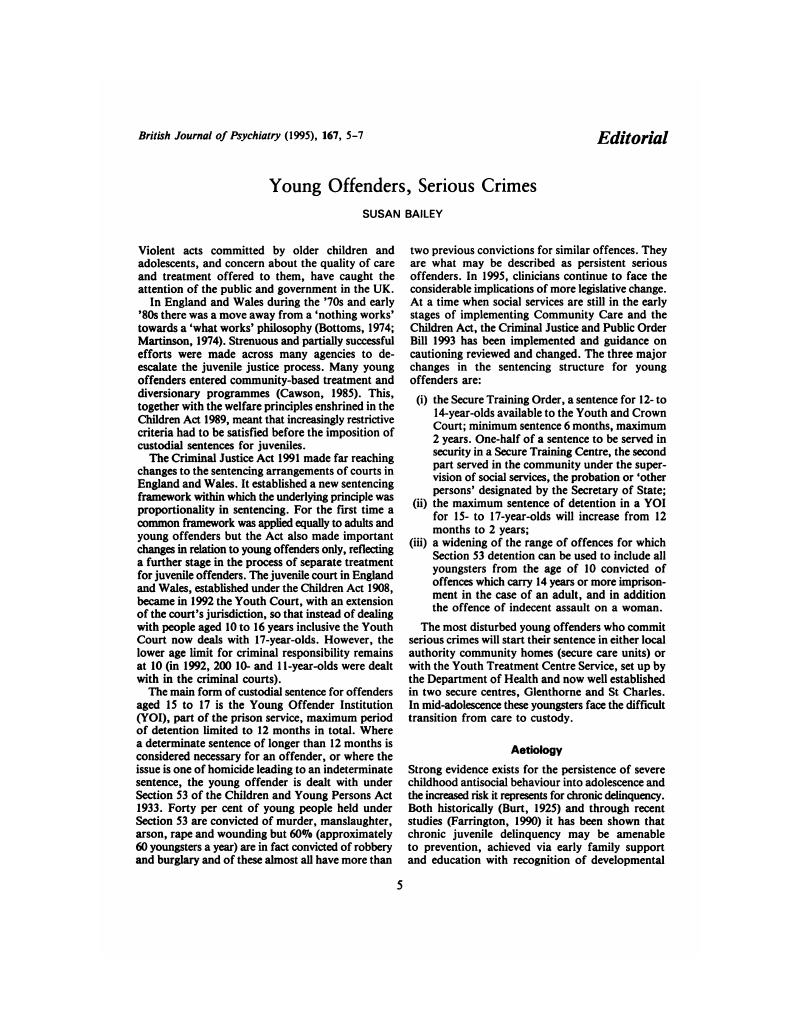Crossref Citations
This article has been cited by the following publications. This list is generated based on data provided by Crossref.
Lord, Alex
and
Barnes, Carol
1996.
Family liaison work with adolescents in a sex offender treatment programme.
Journal of Sexual Aggression,
Vol. 2,
Issue. 2,
p.
112.
Richardson, Gregory J.R.
and
Williams, Richard
1996.
Child and adolescent mental health services.
Current Opinion in Psychiatry,
Vol. 9,
Issue. 4,
p.
262.
Lengua, Cesar
Bhatti, Vijay
Vostanis, Panos
Rothery, David
and
Cope, Rosemarie
1997.
Psychiatrists' views on the need for the development of an adolescent forensic service.
The Journal of Forensic Psychiatry,
Vol. 8,
Issue. 3,
p.
635.
Claypoole, Sophia D.
Moody, Edward E.
and
Peace, Sandra D.
2000.
Moral dilemma discussions: An effective group intervention for juvenile offenders.
The Journal for Specialists in Group Work,
Vol. 25,
Issue. 4,
p.
394.
Kanerva, L.
2000.
Handbook of Occupational Dermatology.
p.
254.
Bailey, S.
Smith, C.
and
Dolan, M.
2001.
The social background and nature of “children” who perpetrate violent crimes: A UK perspective.
Journal of Community Psychology,
Vol. 29,
Issue. 3,
p.
305.
Madianos, Michael G.
2002.
Deinstitutionalization and the Closure of Public Mental Hospitals.
International Journal of Mental Health,
Vol. 31,
Issue. 3,
p.
66.
Heide, Kathleen M.
and
Solomon, Eldra P.
2003.
Treating Today's Juvenile Homicide Offenders.
Youth Violence and Juvenile Justice,
Vol. 1,
Issue. 1,
p.
5.
Townsend, Ellen
Walker, Dawn-Marie
Sargeant, Sally
Stocker, Olivia
Vostanis, Panos
Sithole, Jabulani
and
Hawton, Keith KE
2008.
Interventions for mood and anxiety disorders, and self harm in young offenders.
Cochrane Database of Systematic Reviews,
Thomson, Lindsay D.G.
and
Robinson, Louise
2010.
Companion to Psychiatric Studies.
p.
731.
Hassani, Samira
and
Rajab, Azizah
2012.
General Communication Anxiety among EFL Students; A Case of Iranian Students of Intensive English Programs.
Procedia - Social and Behavioral Sciences,
Vol. 66,
Issue. ,
p.
410.






eLetters
No eLetters have been published for this article.